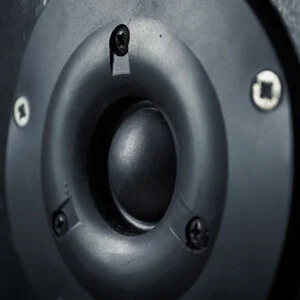Ferrofluid Speaker
Listen to this Article
Speaker with silk membrane and ferrofluid
Ferrofluid is a liquid containing tiny magnetic particles that respond to magnetic fields. When exposed to a magnetic field, these particles align themselves forming intricate patterns that find applications in various fields. One of the most intriguing uses of ferrofluid is in speaker technology.
Traditional speakers convert electrical signals into sound waves using a diaphragm, which can sometimes lead to inefficiencies and distortion. Ferrofluid speakers improve upon this by employing ferrofluid between the speaker's voice coil and magnet. As an electric current passes through the voice coil, it generates a magnetic field that interacts with the ferrofluid, causing it to move precisely. This controlled movement results in more accurate sound reproduction compared to conventional speakers.
Beyond its acoustic benefits, ferrofluid also offers mesmerizing visual appeal. The magnetic particles in the fluid create dynamic shapes and patterns when influenced by a magnetic field. In ferrofluid speakers, this fluid is often displayed in a transparent chamber, allowing viewers to witness its synchronized dance to the music.
While ferrofluid speakers represent cutting-edge technology and are favored by audiophiles and tech enthusiasts alike, they do come at a higher cost than traditional speaker systems. However, the superior sound quality and captivating visual spectacle they provide make them a compelling choice for those seeking to elevate their home audio setup. If you're considering an upgrade that combines audio precision with visual artistry, ferrofluid speakers could be the perfect choice.

